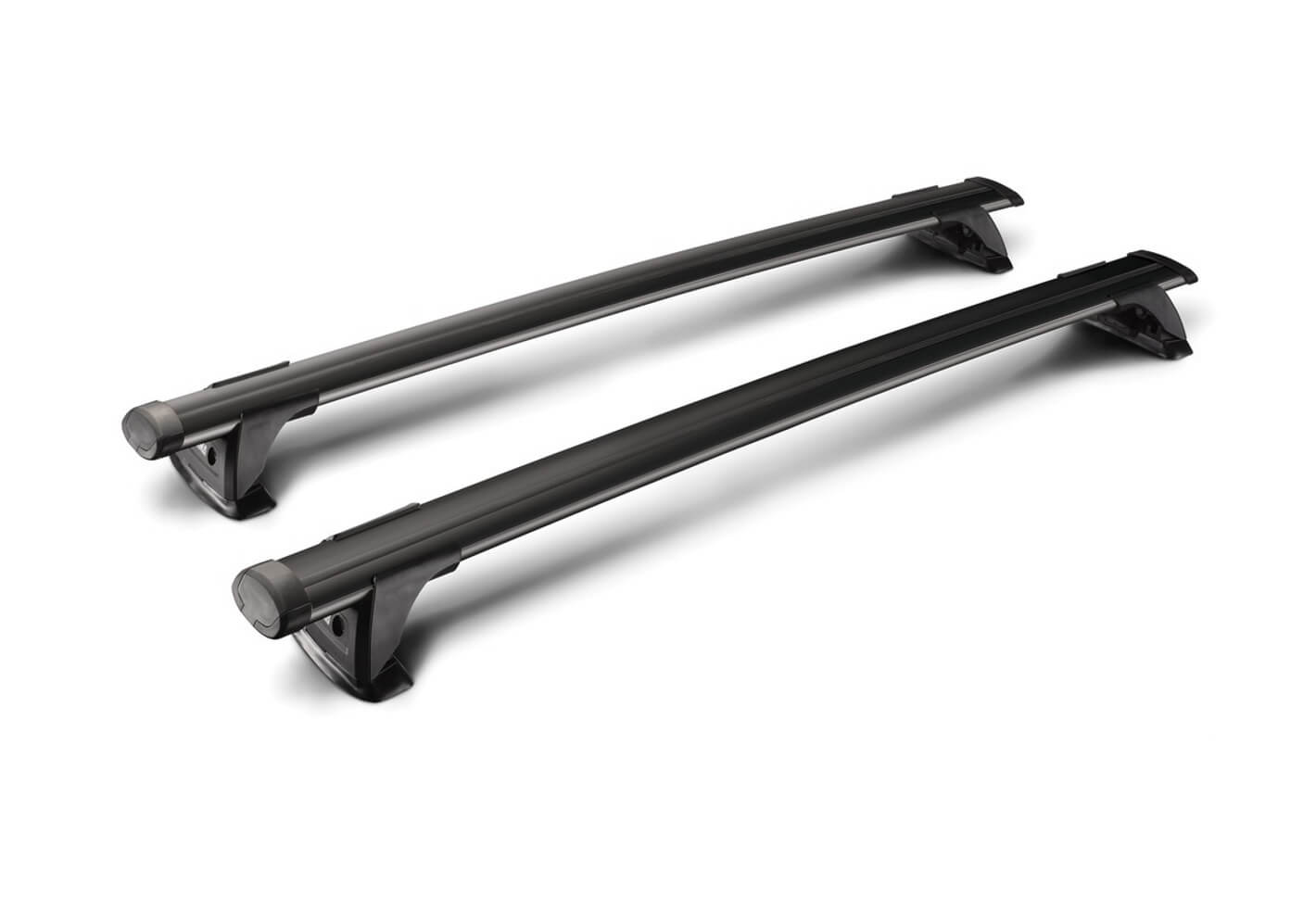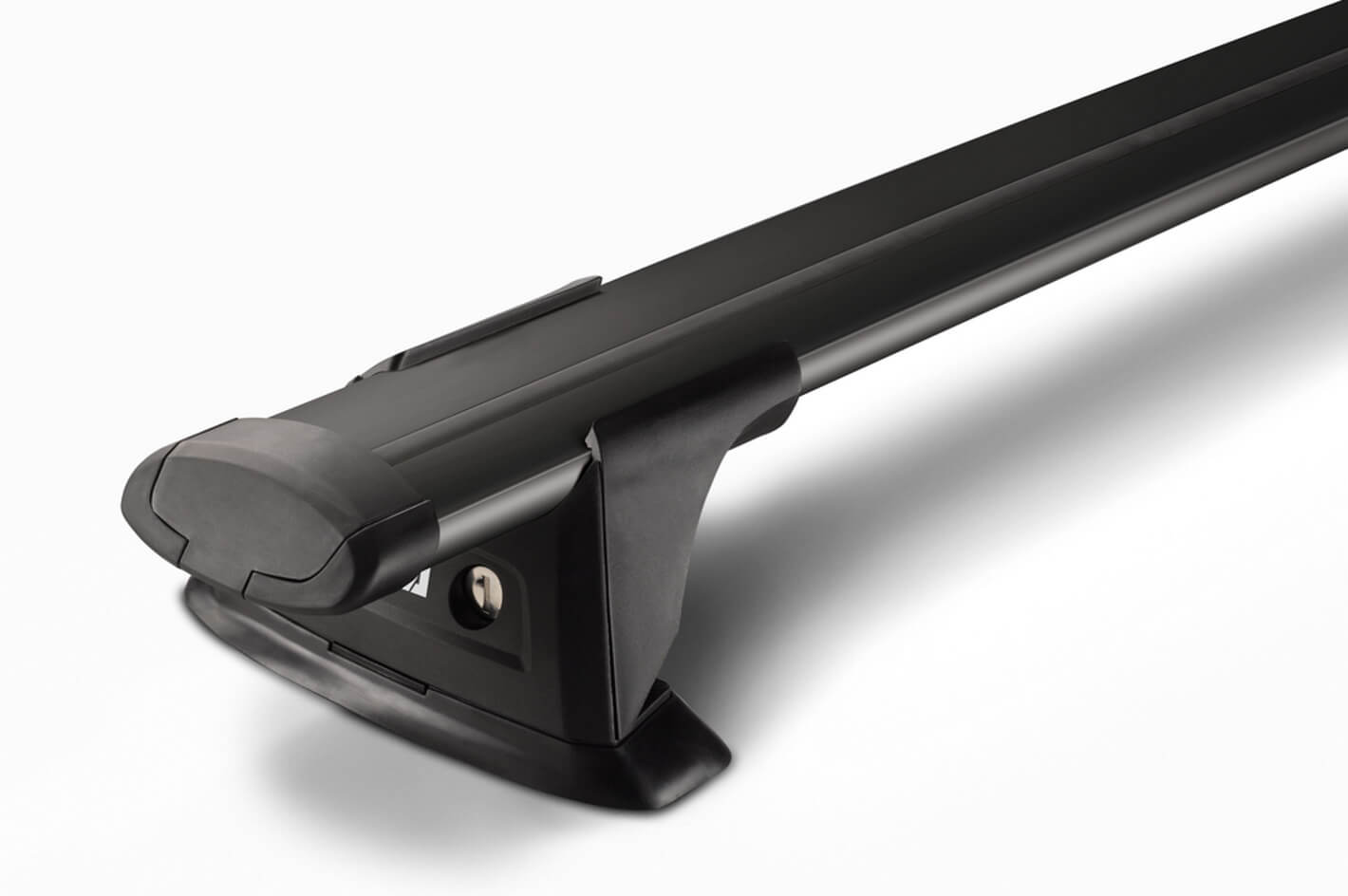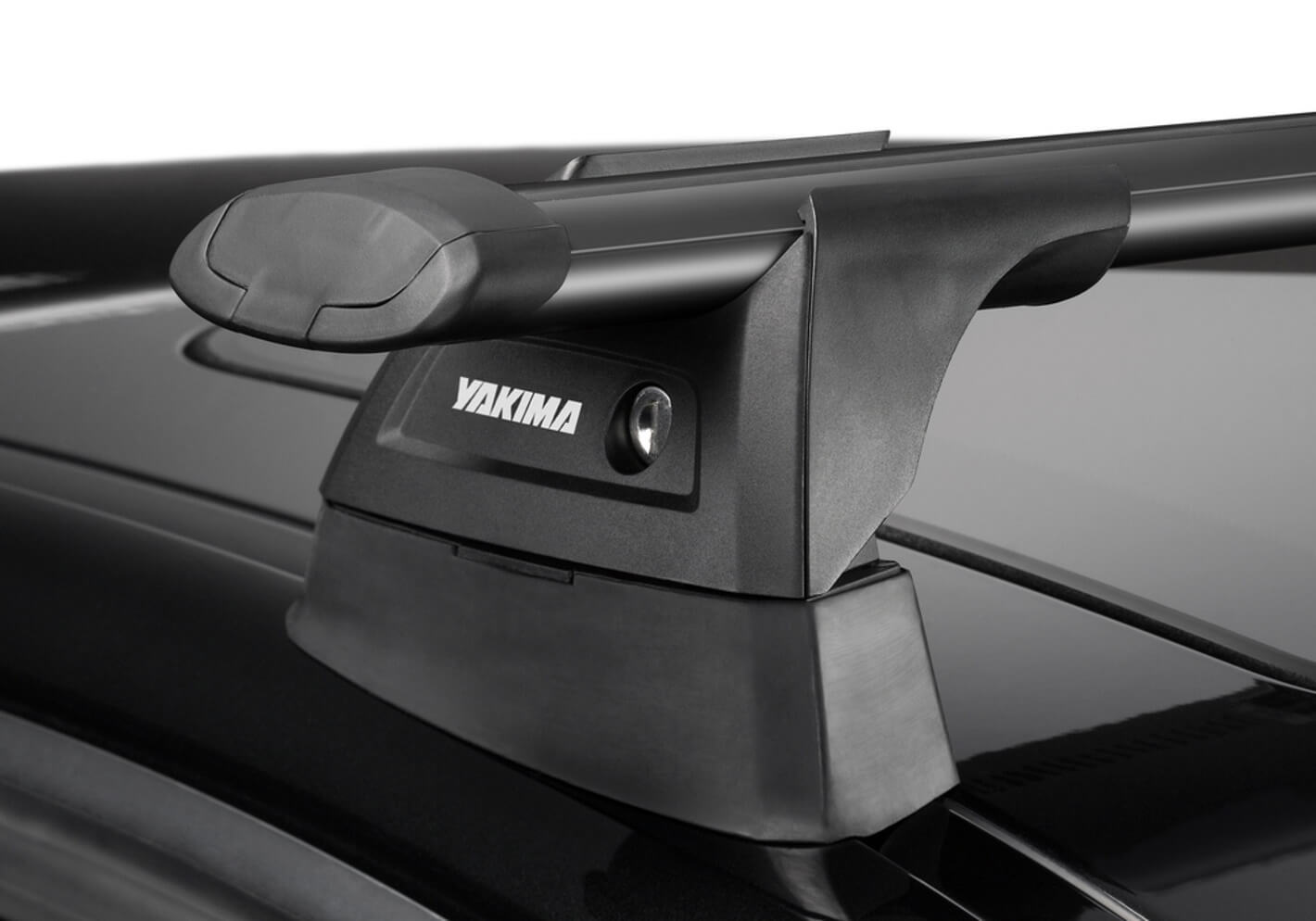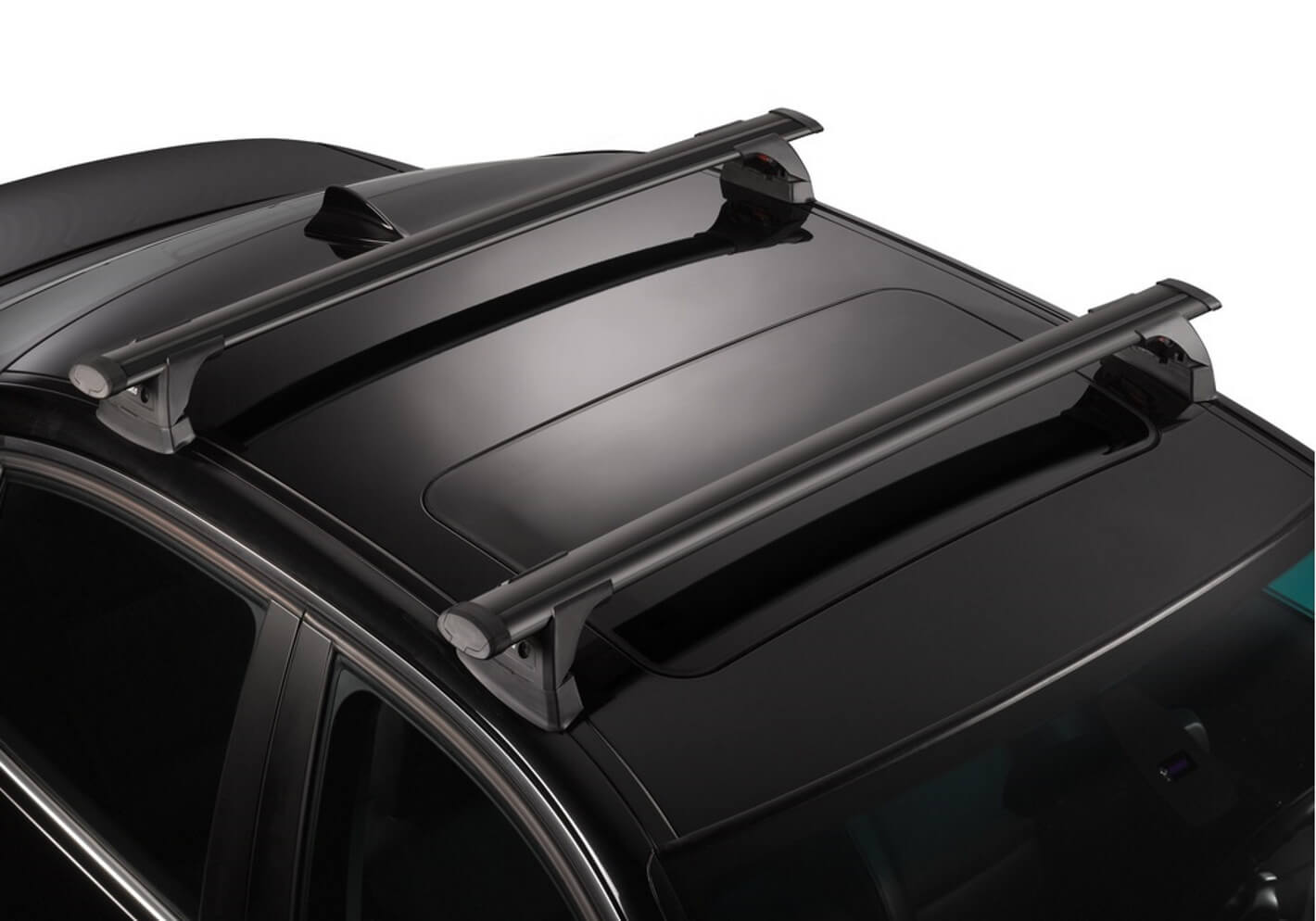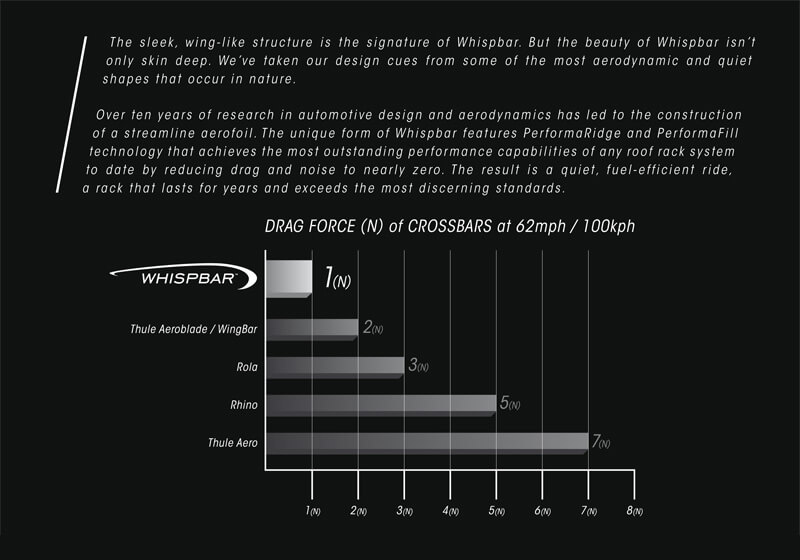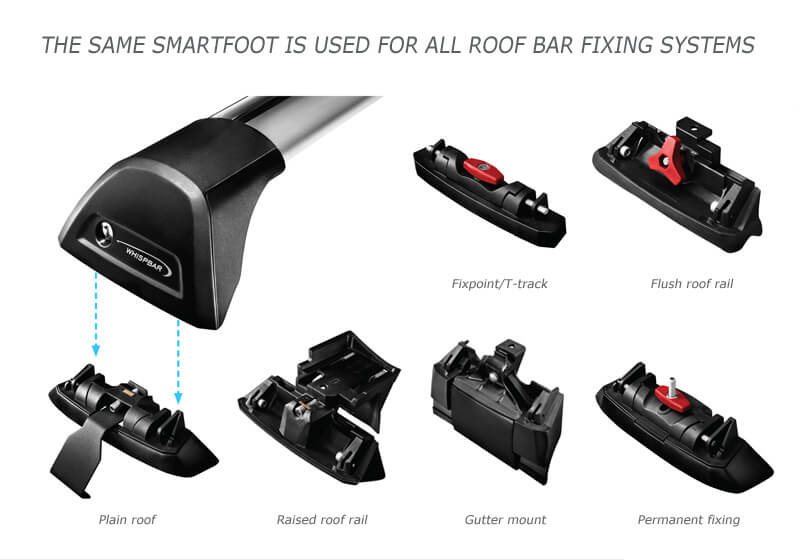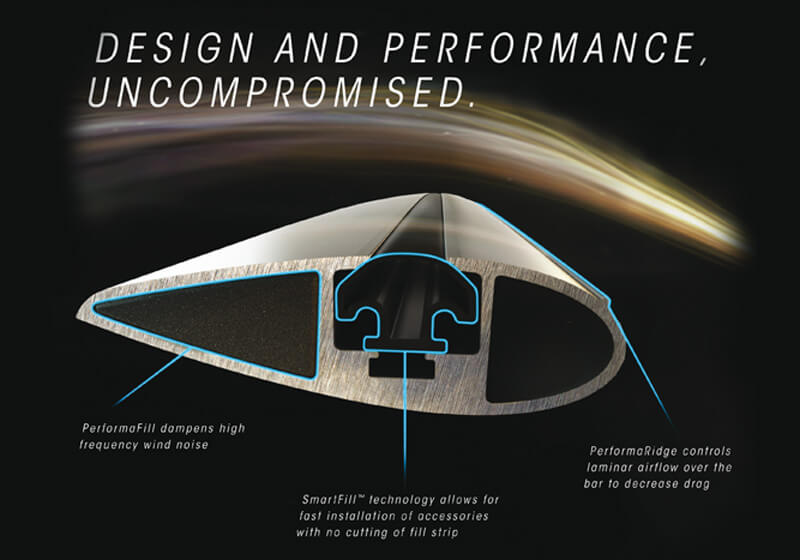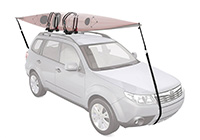Yakima roof bars package - S17B black bars with K419 kit
£204.95
In stock
Yakima's Whispbar™ is without any doubt the most advanced roof bar system on the planet. It's easy to fit, is almost silent in use, and has negligible impact on fuel consumption. And because it looks superb you're likely to leave it in place semi-permanently. With 420mm of adjustment on each bar, a SmartFoot™ which allows the same feet to be used for all fixing systems from Fixpoints to roof rails, and fitting kits at only £30 a pop, it's also your best choice for long term value.
Yakima's Whispbar™ is without any doubt the most advanced roof bar system on the planet. It's easy to fit, is almost silent in use, and has negligible impact on fuel consumption. And because it looks superb you're likely to leave it in place semi-permanently. With 420mm of adjustment on each bar, a SmartFoot™ which allows the same feet to be used for all fixing systems from Fixpoints to roof rails, and fitting kits at only £30 a pop, it's also your best choice for long term value.
|
The aim of this note is to persuade you that kayaks should always be tied to the carrying vehicle at both bow and stern.
Untied kayaks have, in our experience, the greatest potential for a roof bar or kayak carrier failure. The massive forces that untied kayaks can generate have even been known to snap roof bar fixing bolts with the result that a complete assembly of roof bars and kayaks has ended up on the road. We know that this has happened with almost every brand of roof bar, and regardless of whether the kayaks are on a special carrier or just strapped to the bars. You need to fix bow and stern lines, probably using the front and rear screw-in towing eyes to get strong and accessible fixing points on the vehicle. Kayak shops should be able to provide suitable 'paracord' for this purpose. Alternatively, we have sets of straps available that are perfect for the job and are really easy to use. Yakima make some excellent Bow/Stern tie down straps and Thule makes the QuickDraw 838 which we have listed together with every kayak carrier we sell. Please note that kayaks should be strapped to the roof bars, or to kayak carriers, using straps that are suitable for the purpose, e.g. 25mm polypropylene straps with strong buckles. Bungee cords must never be used. Please also note that all roof bar instructions point out the dangers of carrying unsecured long items, as of course do all kayak carrier instructions. If you tie down your kayaks properly you almost certainly won't experience a product failure. If you don't you may or may not get away with it. If there is a disaster and the kayaks end up on the road, separated from the vehicle, then you were not using tie downs and you have subjected the roof bars to forces for which they were not designed. The costs of sorting this out are yours, not ours, and you may also have difficulties with your insurers. We're sorry to be so firm about this, but "things coming off the tops of cars" is the stuff of nightmares, and we want to do all we can to prevent accidents of this sort from happening. |
Delivery charges and arrangements:We charge a contribution towards delivery costs, depending on what you order, where you live, and how quickly you want the goods. These are our standard charges; there are usually surcharges for all offshore destinations and some remote postcodes - for details please see our delivery information page.
Delivery of other items
Delivery timesDelivery times are calculated in working days (Monday to Friday, excluding Bank holidays). Cut-off times for Express Delivery orders
Delivery FAQsWhen will my order arrive? What about Next Working Day delivery? Is my delivery day guaranteed? Do I need to be at home? Payment options:We take the following cards, and also PayPal. Please note that the entry on your card statement will be from "The Roof Box Company". 



Secure paymentsOur website is secured by Sectigo (formerly Comodo CA), the largest commercial Certificate Authority in the world. 

|
|||||||||||||||||||||||||||||||||||||

Roof Tents should NOT be fitted to vehicles with clamp-mount roof bars Roof top tents are becoming increasingly popular, but we advise they should not be carried on vehicles that use clamp-mount roof bars. There is too much risk of damage to the roof, which would also be a massive safety issue because the roof bar clamps would not work correctly. Clamp-mount roof barsIf you are reading these notes then your vehicle has a plain roof and uses clamp-mount roof bars. Our advice is that plain roof vehicles are not suitable for carrying roof top tents; we only recommend fitting roof tents to vehicles with roof rails, fix points, T-tracks or gutters, because here the roof bars and the roof load sit on the roof welds, where the sides of the vehicle are welded to the roof part; these are strong points. Clamp-mount systems for modern cars often sit outside these roof welds, on the ordinary unreinforced roof steel towards the edges of the vehicle roof. The danger is that a plain roof may well not be strong enough to cope with the static weight of a roof tent and the occupants. This weight can cause the roof bar feet to make dents in the roof, which not only damages the vehicle but means that the clamping plates can no longer work as designed, so the safety of the whole roof bar system is compromised. The weight of a tent can easily be 65kg (hard top tents can be over 75kg) plus roof bars at 8kg and two adults at let’s say 90kg each, that’s a total 253kg, well over 3 times the typical 75kg dynamic loading limit. If there are three occupants at let’s say 80kg each then we get to 313kg. We supply tents made by Thule and by Yakima, respectively the world’s biggest and second biggest car rack manufacturers. Their tent instructions state that clamp-mount roof bars are not suitable for plain roof bars - ‘DO NOT use’. These brands would not turn away business if this matter is not important. Thule's guidelines or instructions should be available via the Fitting instructions and videos tab. We realise that this advice is confusing because these specific instructions are part of Thule’s and Yakima’s roof tent instructions, but are not included in their roof bar fitting instructions. We also supply CRUZ and Atera roof bars; again, no mention is made of roof tents in their roof bar instructions. It is the roof bar feet that can make dents in vehicle roofs, even though it is a roof tent plus human(s) that caused the overloading; where we have supplied the roof bars, customers may look to us for repairs to their vehicles. The safety implications are a much bigger worry for us than the vehicle damage implications, which is why the safe option is to advise that no roof tents should be fitted to clamp-mount roof bars – all roof tents are very heavy, and many or indeed most of them are heavier than Thule or Yakima tents. We can only advise you; we can’t stop you from carrying inappropriate loads. But if you do purchase clamp-mount roof bars from us, and use them for carrying roof tents, even where you have informed us that you wish to carry a tent, it is reasonable that we will accept no liability for damage to the vehicle, to the roof tent, or to third parties. If in doubt, we suggest that you obtain a written statement from the roof tent supplier to the effect that their tent may be carried on clamp-mount roof bars; this should provide you with some ‘cover’ in the event of any need for a claim. Roof top platformsFull size platforms such as the Thule Caprock and the Yakima LockNLoad platform should also not be used on clamp-mount roof bars; they tend to be heavily loaded, and to be walked on. |







